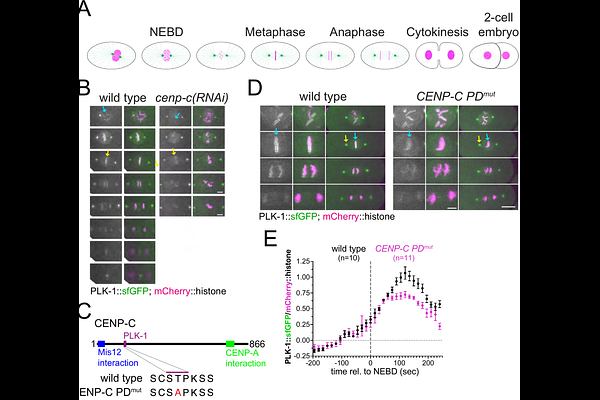CENP-C-targeted PLK-1 regulates kinetochore function in C. elegans embryos

CENP-C-targeted PLK-1 regulates kinetochore function in C. elegans embryos
Bel Borja, L.; Taylor, S. J.; Soubigou, F.; Pelisch, F.
AbstractPolo-like kinase 1 (PLK1) is present in centrosomes, nuclear envelope, and kinetochores and plays a significant role in meiosis and mitosis. PLK-1 depletion or inhibition has severe consequences for spindle assembly, spindle assembly checkpoint (SAC) activation, chromosome segregation, and cytokinesis. BUB1 targets PLK1 to the outer kinetochore and, in mammals, the inner kinetochore PLK1 targeting is mediated by the constitutive centromere associated network (CCAN). BUB1-targeted PLK1 plays a key role in SAC activation and a SAC-independent role through targeting CDC-20. In contrast, whether there is a specific, non-redundant role for inner kinetochore targeted PLK1 is unknown. Here, we used the C. elegans embryo to study the role of inner kinetochore PLK1. We found that CENP-C, the sole CCAN component in C. elegans and other species, targets PLK1 to the inner kinetochore during prometaphase and metaphase. Disruption of the CENP-C/PLK1 interaction leads to an imbalance in kinetochore components and a defect in chromosome congression, without affecting CDC-20 recruitment. These findings indicate that PLK1 kinetochore recruitment by CENP-C has at least partially distinct functions than outer kinetochore PLK1, providing a platform for better understanding the different roles played by PLK1 during mitosis.